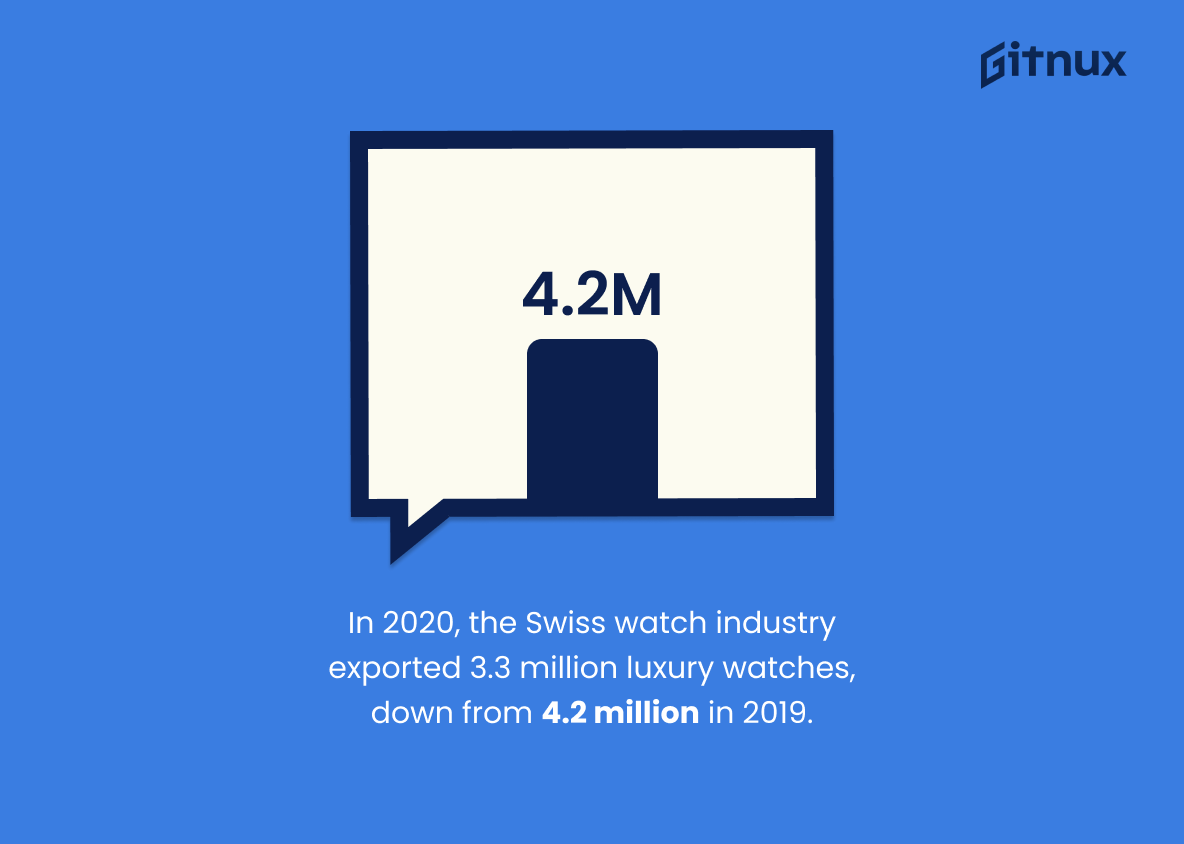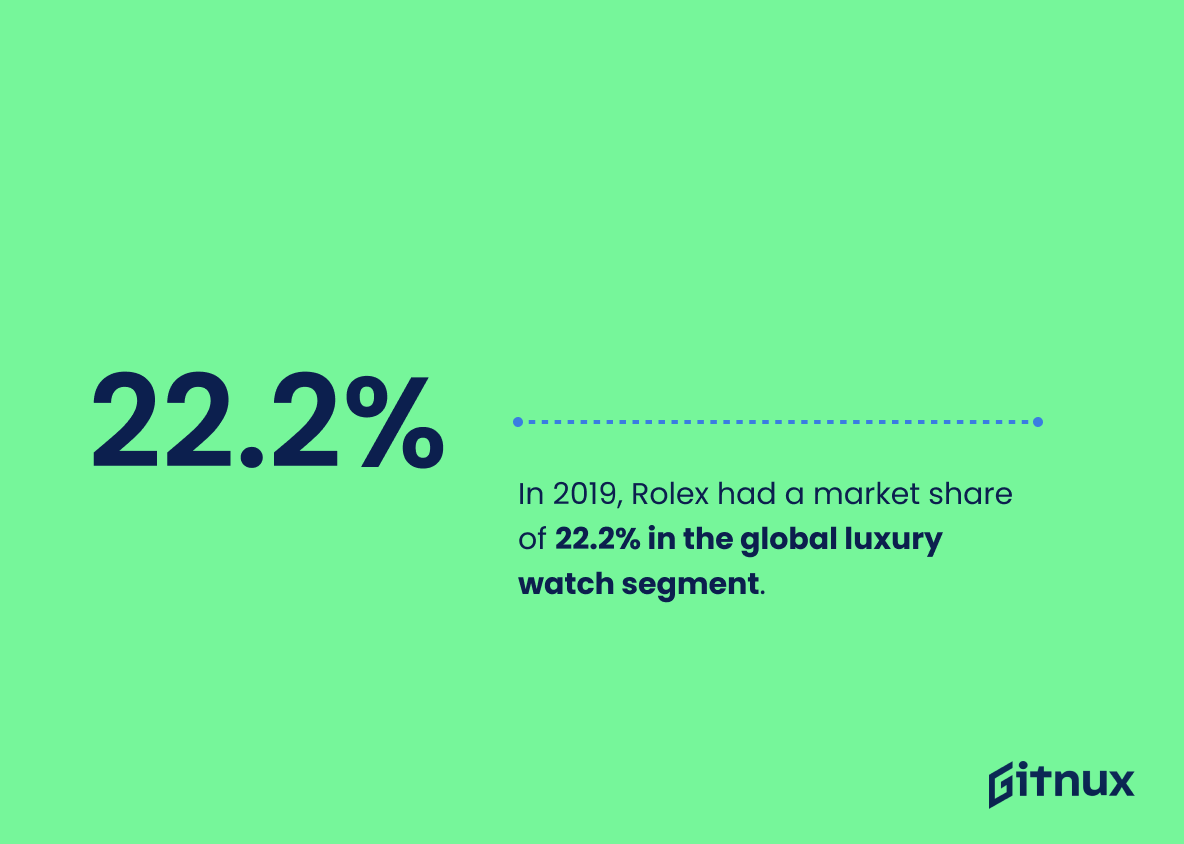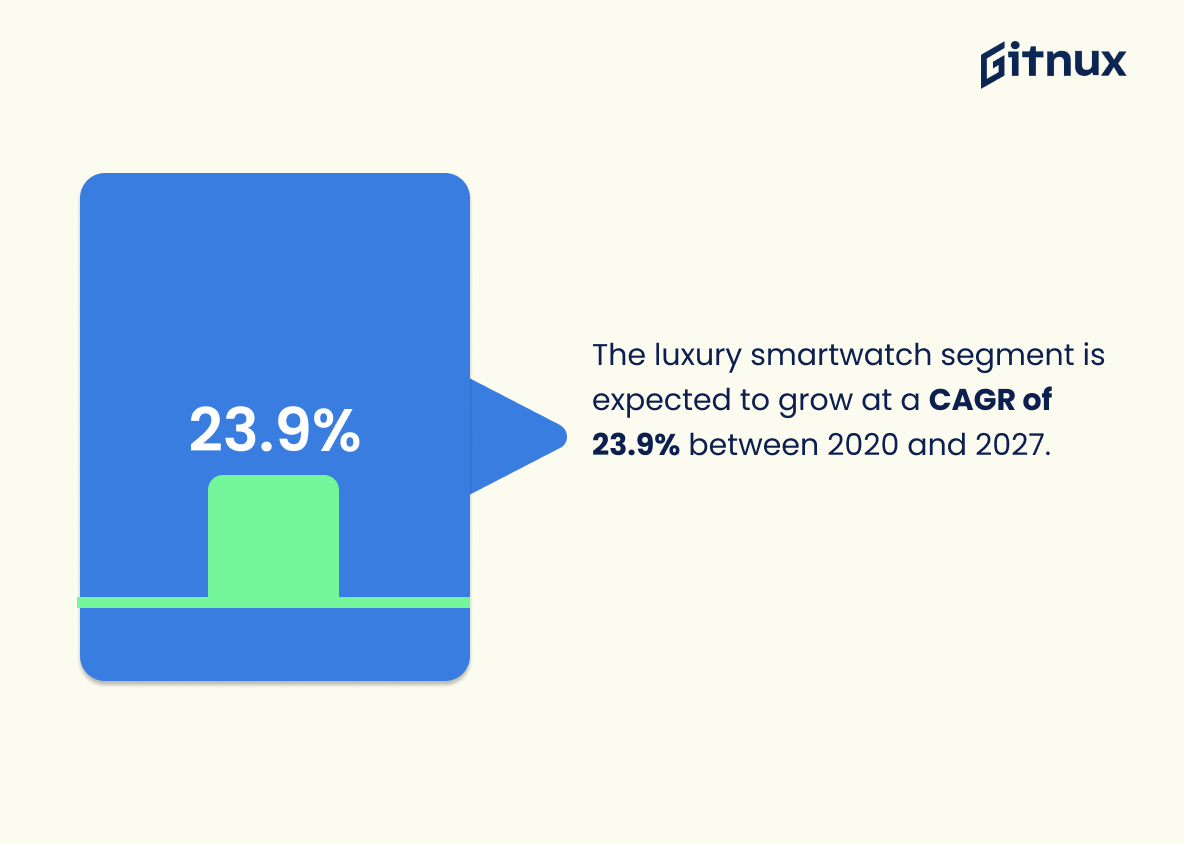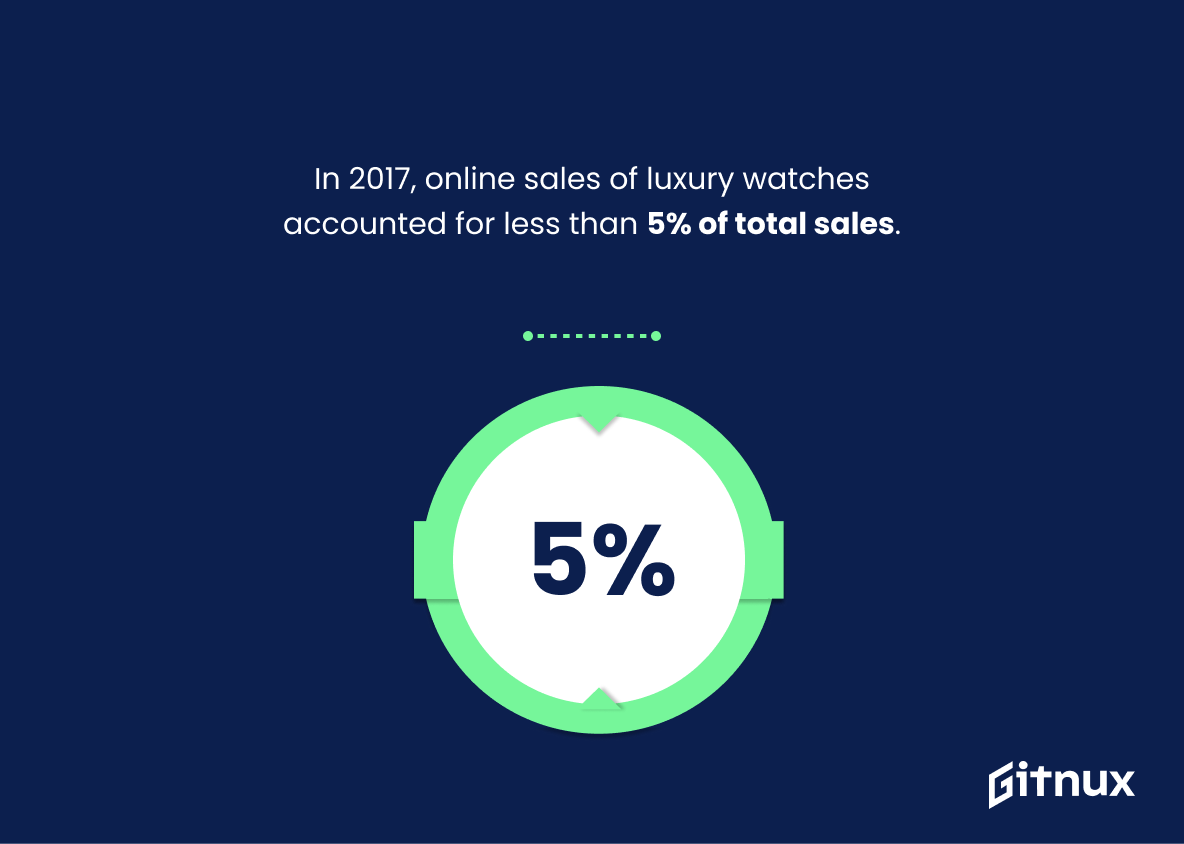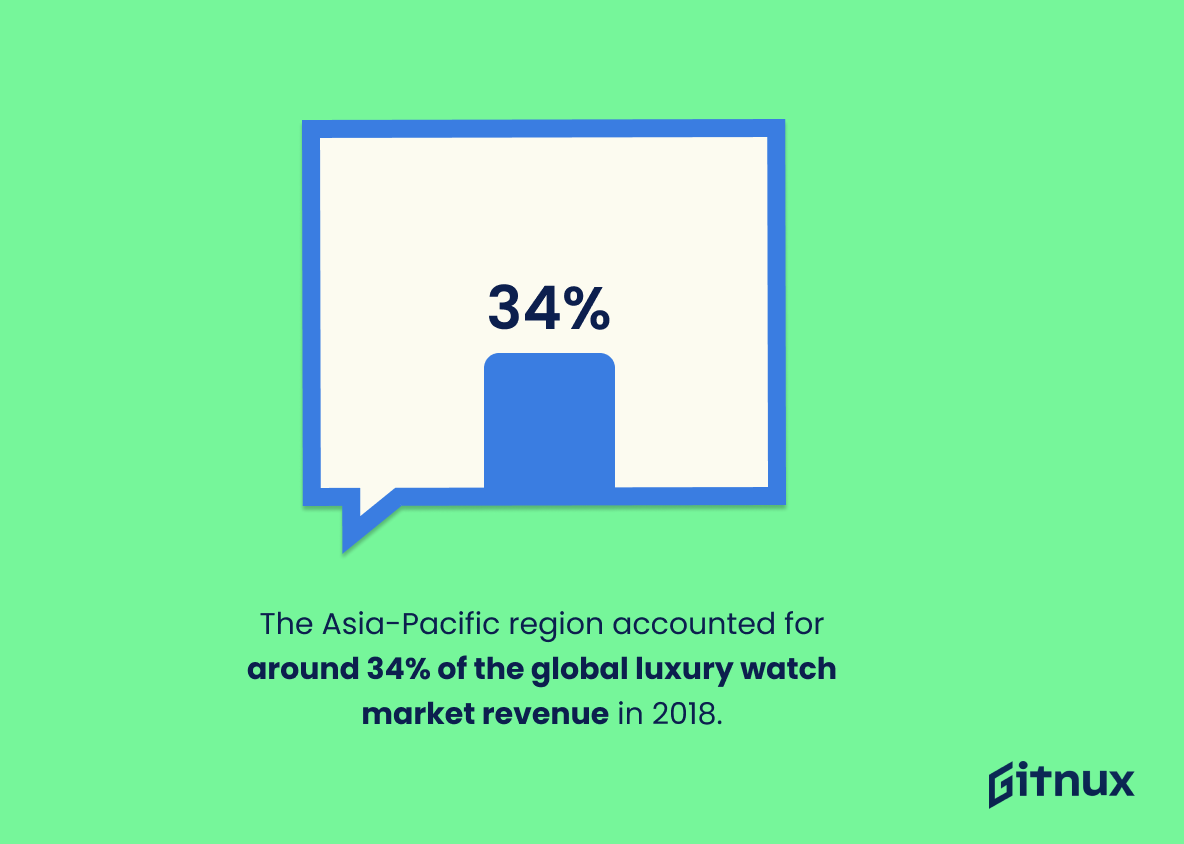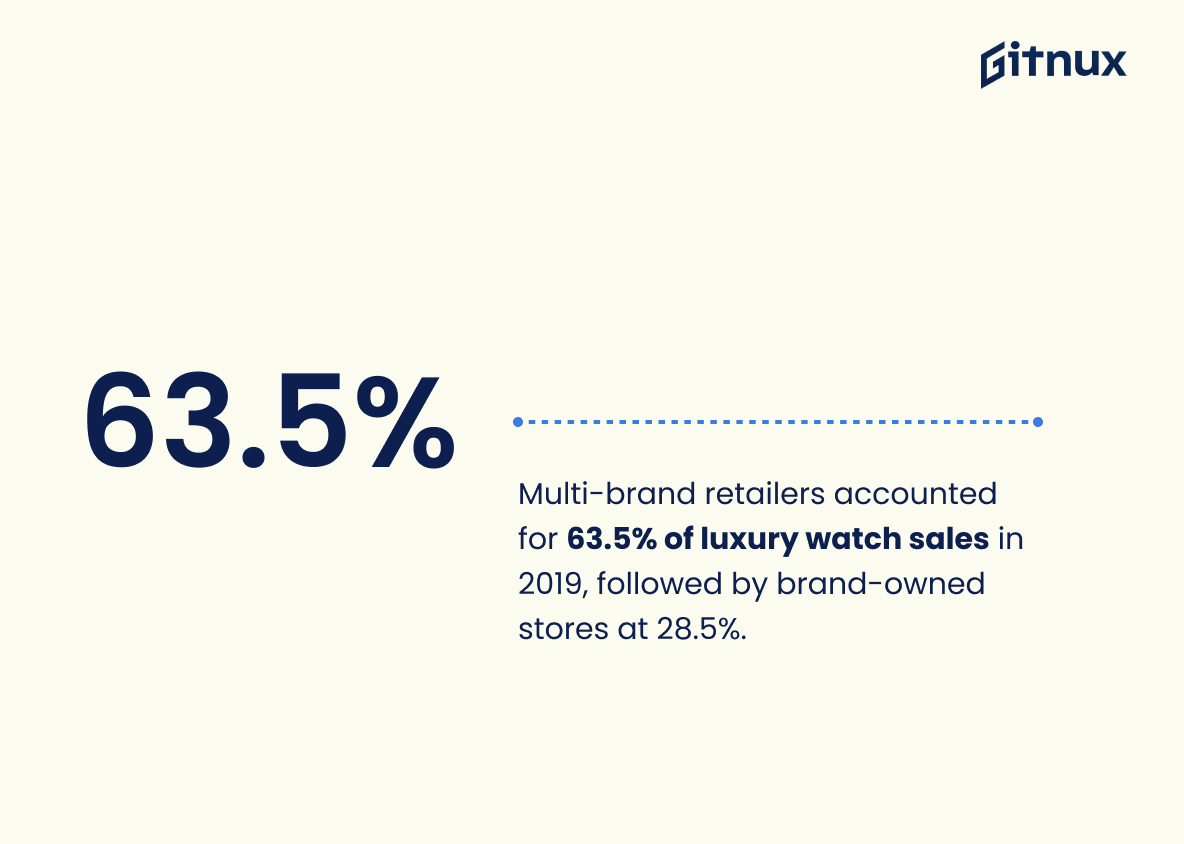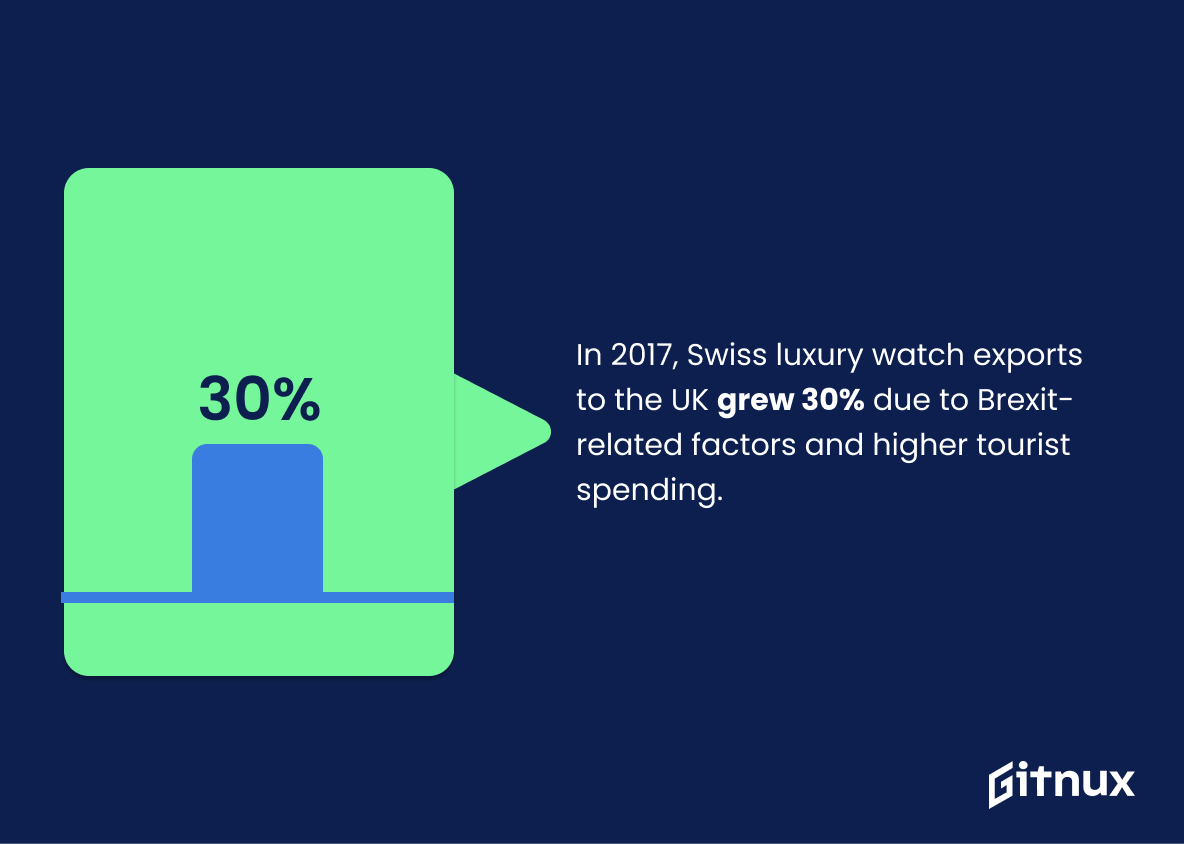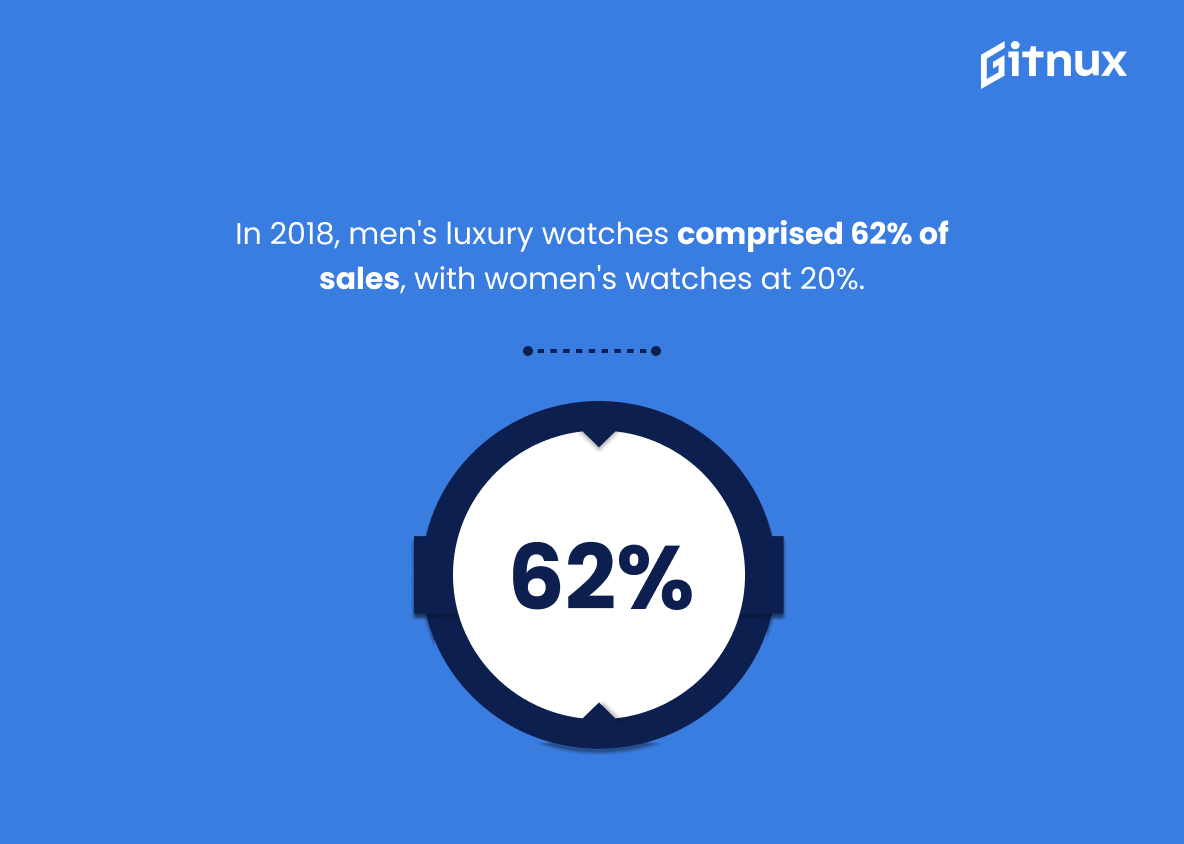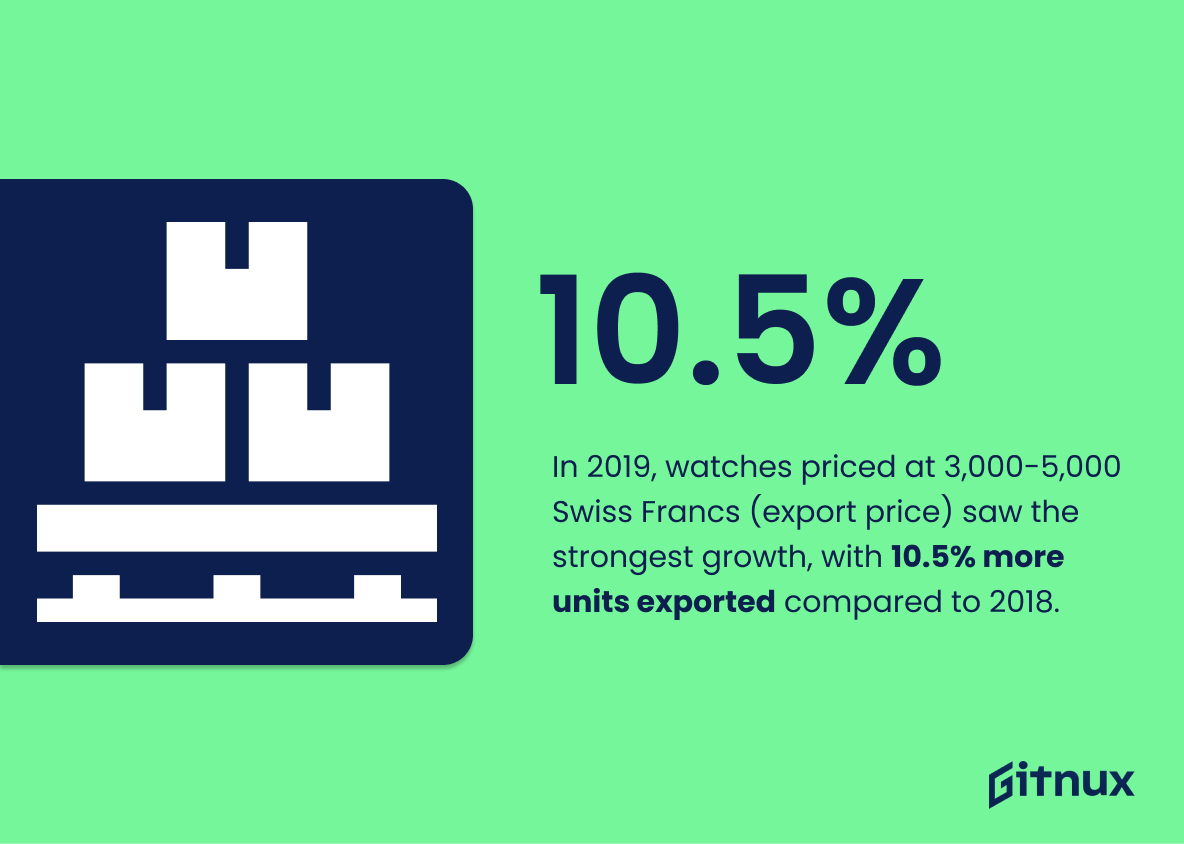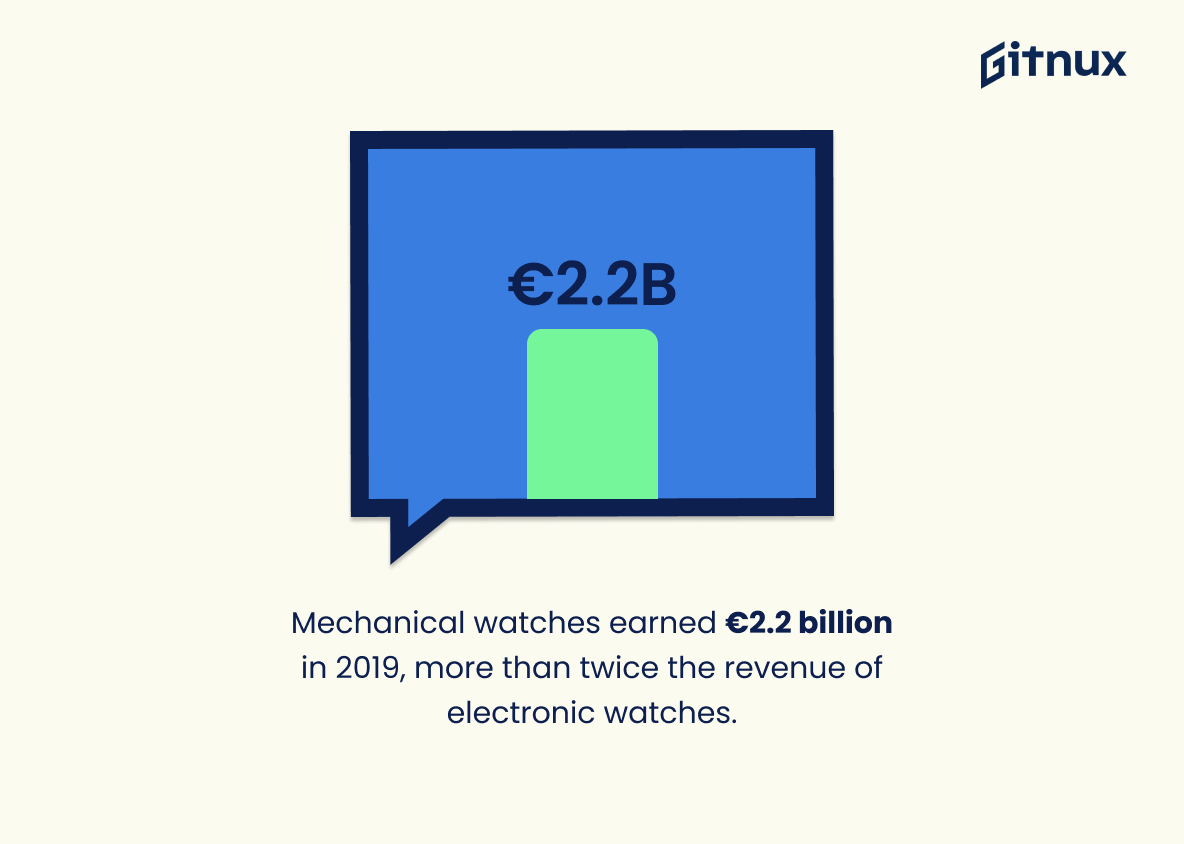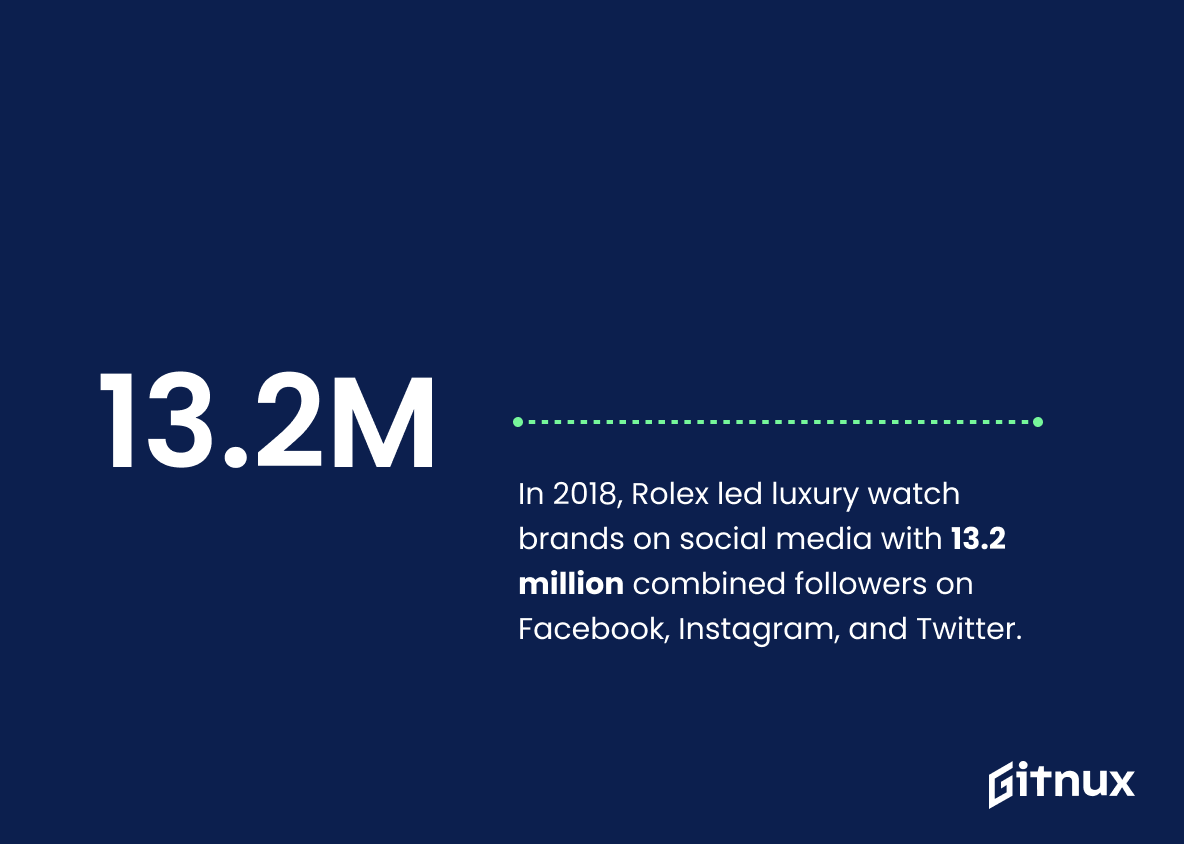The global luxury watch industry is a multi-billion dollar market, with the demand for high-end timepieces continuing to grow. In this blog post, we will explore some of the latest statistics and trends in the luxury watch industry. We’ll look at data on exports from Switzerland, sales by region and gender, average prices paid for watches, growth projections for smartwatches and more. By understanding these key figures about the luxury watch sector today, you can gain valuable insights into where it’s headed in 2021 and beyond.
Luxury Watch Industry Statistics Overview
The United States is the largest market for luxury watches, followed by Hong Kong and mainland China.
This statistic is a telling indication of the luxury watch industry’s current state of affairs. It reveals that the United States is the largest market for luxury watches, with Hong Kong and mainland China following close behind. This indicates that the luxury watch industry is thriving in these countries, and that there is a strong demand for these products. Furthermore, it suggests that the industry is likely to continue to grow in these regions, providing a lucrative opportunity for businesses to capitalize on.
In 2020, the Swiss watch industry exported 3.3 million luxury watches, down from 4.2 million in 2019.
This statistic serves as a stark reminder of the impact of the pandemic on the Swiss watch industry. It highlights the significant decline in exports of luxury watches from 2019 to 2020, demonstrating the financial losses the industry has suffered due to the pandemic. This statistic is an important indicator of the current state of the luxury watch industry and provides valuable insight into the industry’s future prospects.
In 2019, Rolex had a market share of 22.2% in the global luxury watch segment.
This statistic is a testament to Rolex’s dominance in the global luxury watch segment. It highlights the company’s success in the industry and its ability to capture a significant portion of the market. This statistic is an important indicator of the current state of the luxury watch industry and provides valuable insight into the competitive landscape.
The luxury smartwatch segment is expected to grow at a CAGR of 23.9% between 2020 and 2027.
This statistic is a testament to the potential of the luxury smartwatch segment, indicating that it is a rapidly growing market with immense potential. It is an important piece of information for anyone interested in the luxury watch industry, as it provides insight into the current and future trends of the market. This statistic is a valuable resource for anyone looking to invest in the luxury watch industry, as it provides a glimpse into the potential of the segment.
In 2017, online sales of luxury watches accounted for less than 5% of total sales.
This statistic is a telling indication of the current state of the luxury watch industry. It shows that despite the rise of online shopping, the majority of luxury watch sales still take place in traditional brick-and-mortar stores. This statistic is important for understanding the industry’s current trends and provides insight into how the industry may evolve in the future.
In 2019, the Swiss luxury watch industry represented around 51% of total global watch market revenues.
This statistic is a testament to the strength of the Swiss luxury watch industry, highlighting its dominance in the global watch market. It serves as a reminder of the industry’s importance and influence, and provides a valuable insight into the current state of the market. This information can be used to inform decisions and strategies for those involved in the luxury watch industry, and can be used to inform readers of the blog post about the current state of the industry.
The Asia-Pacific region accounted for around 34% of the global luxury watch market revenue in 2018.
This statistic is a telling indication of the immense potential of the Asia-Pacific region in the luxury watch market. It highlights the fact that the region is a major player in the industry, and that it is a lucrative market for luxury watch brands. This statistic is a valuable insight for anyone looking to gain a better understanding of the luxury watch industry and its dynamics.
Multi-brand retailers accounted for 63.5% of luxury watch sales in 2019, followed by brand-owned stores at 28.5%.
This statistic is a telling indication of the luxury watch industry’s current landscape. It reveals that multi-brand retailers are the dominant force in the market, with brand-owned stores lagging behind. This highlights the importance of multi-brand retailers in the luxury watch industry, and the need for brands to focus on building relationships with these retailers in order to maximize their sales.
Swiss luxury watch exports to the United Kingdom increased by around 30% in 2017, attributed to rising tourist spending after Brexit-driven currency depreciations.
This statistic is a testament to the power of the luxury watch industry in the United Kingdom, showing that despite the economic uncertainty caused by Brexit, the industry has been able to thrive. It is a sign that the industry is resilient and can adapt to changing economic conditions, and that the demand for luxury watches in the UK remains strong. This is an important statistic to consider when discussing the luxury watch industry, as it demonstrates the industry’s ability to remain competitive in a challenging environment.
Around 62% of luxury watch sales in 2018 were for men’s watches, with women’s watches accounting for around 20%.
This statistic is a telling indication of the luxury watch industry’s focus on men’s watches. It highlights the fact that the majority of luxury watch sales in 2018 were for men’s watches, with women’s watches only accounting for a fraction of the total sales. This information is important to consider when discussing the luxury watch industry, as it provides insight into the preferences of the market and the industry’s focus.
In 2019, watches priced at 3,000-5,000 Swiss Francs (export price) saw the strongest growth, with 10.5% more units exported compared to 2018.
This statistic is a testament to the strength of the luxury watch industry, as it shows that watches priced in the mid-range of the market are experiencing the most growth. This indicates that the industry is thriving, as consumers are willing to invest in higher-priced watches. This is a positive sign for the industry, as it suggests that the demand for luxury watches is increasing.
Mechanically-powered watches generated revenue of €2.2 billion in 2019, more than double the sales of electronic watches.
This statistic is a testament to the enduring appeal of mechanically-powered watches in the luxury watch industry. It shows that despite the emergence of electronic watches, the traditional style of watch still has a strong presence in the market. This is an important insight for anyone looking to understand the current state of the luxury watch industry.
In 2018, Rolex ranked first among luxury watch brands on social media, with an estimated 13.2 million followers combined on Facebook, Instagram, and Twitter.
This statistic is a testament to the power of Rolex’s social media presence, demonstrating that the brand has a strong influence on the luxury watch industry. It shows that Rolex is a leader in the industry when it comes to engaging with customers and potential customers on social media, and that its followers are highly engaged. This statistic is an important indicator of the success of Rolex’s marketing efforts and its overall standing in the luxury watch industry.
As of February 2020, the top three most valuable luxury watch brands are Rolex (worth $7.9 billion), Omega ($3.1 billion), and Cartier ($3.0 billion).
This statistic is a testament to the immense value of the luxury watch industry, with Rolex, Omega, and Cartier leading the way. It highlights the immense potential of the industry, and the immense profits that can be made from it. It also serves as a reminder of the importance of investing in quality watches, as these three brands have proven to be the most valuable in the industry. This statistic is a valuable insight into the luxury watch industry, and is essential for anyone looking to gain a better understanding of the industry.
Conclusion
The global luxury watch market is expected to grow at a CAGR of around 4% from 2020-2025, with the Swiss industry leading exports worth over 20 billion Swiss Francs in 2019. The United States is currently the largest market for luxury watches, followed by Hong Kong and mainland China. In 2020, 3.3 million units were exported from Switzerland compared to 4.2 million in 2019 due to COVID-19 related disruptions; Rolex had a 22.2% share of this segment that year as well. Average prices rose 21.6%, reaching 715 Swiss Francs per unit while multi-brand retailers accounted for 63.5%. Smartwatches are also gaining traction with an estimated 23.9% growth rate between 2020 and 2027; however online sales still remain low at less than 5%. Asia Pacific accounts for 34% of total revenue while men’s watches make up 62%, women’s only 20%. Grey markets contribute 10%; Rolex remains the most valuable brand valued at $7
References
0. – https://www.www.euromonitor.com
1. – https://www.www.psmarketresearch.com
2. – https://www.www.reuters.com
3. – https://www.luxurysociety.com
4. – https://www.www.mckinsey.com
5. – https://www.www.fhs.swiss
6. – https://www.www.statista.com
7. – https://www.brandirectory.com
8. – https://www.www.imarcgroup.com
9. – https://www.www.grandviewresearch.com
Srive – Luxury Watch Industry Statistics

